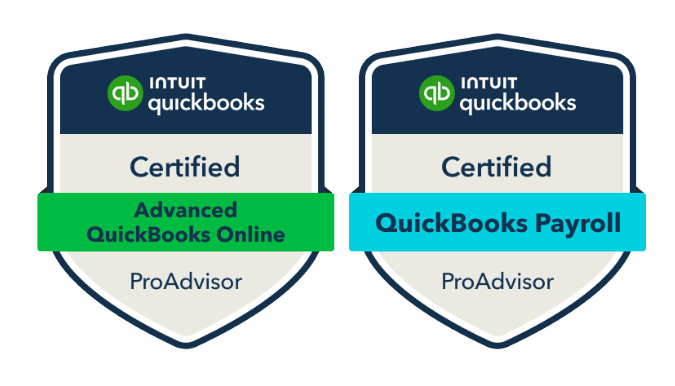Introduction
Feeling overwhelmed by messy books? 🤯 You’re not alone! Many business owners put bookkeeping on the back burner until tax season rolls around… and then panic sets in.
If your books are disorganized, incomplete, or full of errors, now is the time to clean them up. This ultimate checklist will help you take control of your finances—so you can make better business decisions, stay tax-compliant, and reduce stress! ✅
Step 1: Gather Your Financial Documents 📂
Before diving in, make sure you have the following:
✅ Bank & credit card statements (last 12 months)
✅ Receipts for business expenses
✅ Payroll records
✅ Loan & debt statements
✅ Previous tax returns
✅ Any missing invoices (accounts payable & receivable)
🎯 Pro Tip: Use a digital storage tool like Google Drive, or QuickBooks Receipt Capture to organize documents.
Step 2: Categorize Transactions Correctly 🏷️
🚨 Common Mistakes to Avoid:
❌ Mixing personal & business expenses
❌ Misclassifying expenses (e.g., rent recorded as office supplies)
❌ Forgetting to categorize income sources properly
How to Fix It:
- Review your Chart of Accounts in QuickBooks
- Categorize transactions based on business type
- Use QuickBooks’ Bank Rules feature to automate categorization
Step 3: Reconcile Your Accounts 🔄
🚨 Why? Reconciliation ensures that your bank statements match what’s recorded in QuickBooks, preventing errors or fraud.
How to Reconcile Accounts in QuickBooks:
- Log into QuickBooks Online and go to Settings > Reconcile
- Select the account you want to reconcile (bank, credit card, etc.)
- Compare transactions in QuickBooks with your bank statement
- Match transactions or enter any missing ones
- Ensure the ending balance matches your statement
- Click Finish Now 🎉
🎯 Pro Tip: Watch for Old Unreconciled Transactions
If your reconciliation screen shows a bunch of old transactions at the top of the list, that’s a red flag. These are often duplicate entries that haven’t been matched or cleared properly, and they can seriously skew your financial reports.
Take a screenshot of the unreconciled items and look them up in the bank register. If you find duplicates, they should be matched, voided, or excluded through the Banking tab in QuickBooks. Cleaning these up ensures your balances are accurate and your reports reflect reality.
Step 4: Fix Accounts Payable & Receivable 💰
🚨 Problem: Unpaid invoices or forgotten bills can lead to cash flow issues.
How to Fix It:
- Check Accounts Receivable (A/R): Follow up on unpaid invoices 📩
- Review Accounts Payable (A/P): Make sure you’ve recorded all vendor payments
- Send reminders to clients with overdue payments
- Set up automated invoice reminders in QuickBooks
🎯 Pro Tip: Don’t Ignore the Undeposited Funds Account
QuickBooks uses a temporary holding account called Undeposited Funds (sometimes labeled “Payments to Deposit”). It holds customer payments you’ve received but haven’t yet matched to a bank deposit.
If you see a large or growing balance in this account, it may mean you’re duplicating income—recording it once when the invoice is paid, and again when the deposit comes through the bank feed. That means your income is overstated, and that can lead to paying more in taxes than necessary.
Review the Undeposited Funds account regularly and match customer payments to actual deposits rather than categorizing them as new income. It’s a simple fix that can make a big impact.
📌 Deep Dive: Learn How to Track A/R and A/P Like a Pro (coming soon!).
Step 5: Review Payroll & Employee Expenses 👥
🚨 Common Payroll Mistakes:
- Incorrect tax withholdings
- Miscalculating overtime or bonuses
- Missing payroll expense deductions
How to Fix It:
- Review employee pay rates & tax deductions
- Check payroll reports in QuickBooks for accuracy
- Reconcile payroll liabilities to avoid IRS penalties
📌 Need Help? Check out our Payroll Best Practices Guide (coming soon!).
Step 6: Ensure Tax Compliance 📊
🚨 Why? Messy books = IRS red flags = potential audits 😬
Tax Prep To-Do List:
- Confirm that sales tax & payroll tax filings are up to date
- Verify that deductible expenses are categorized properly
- Organize tax documents for easy filing
Step 7: Generate & Review Financial Reports 📈
Understanding your numbers = better business decisions!
Key Reports to Run in QuickBooks:
- Profit & Loss Statement: Are you making a profit?
- Balance Sheet: What’s your company’s financial position?
- Cash Flow Statement: Do you have enough cash to cover expenses?
🎯 Pro Tip: Set up monthly financial reviews to stay on top of your numbers!
📌 Need help analyzing reports? Let’s talk! Book a Free Consultation
Final Thoughts: Stay on Top of Your Books Year-Round
Cleaning up your books doesn’t have to be overwhelming—just follow this checklist, stay consistent, and set a monthly bookkeeping routine.
💡 Need expert help? Let’s clean up your books and keep them accurate year-round! Book a Free Consultation






0 Comments